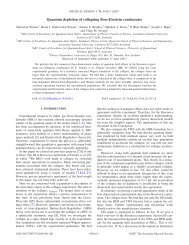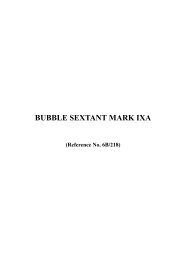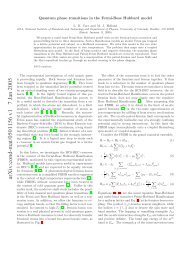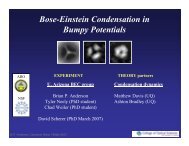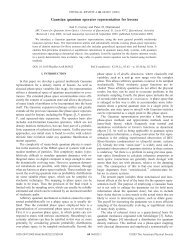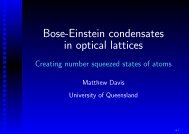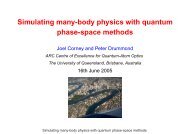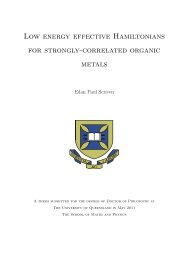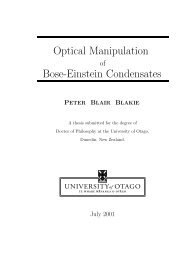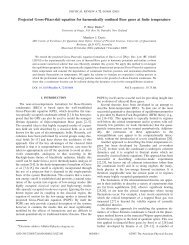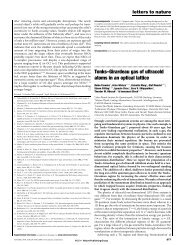Open Quantum Dynamics of Mesoscopic Bose-Einstein ... - Physics
Open Quantum Dynamics of Mesoscopic Bose-Einstein ... - Physics
Open Quantum Dynamics of Mesoscopic Bose-Einstein ... - Physics
Create successful ePaper yourself
Turn your PDF publications into a flip-book with our unique Google optimized e-Paper software.
6. <strong>Quantum</strong> effects in optical fibre communications systems6.4 Modified nonlinear Shrödinger equationThe resultant equation, which includes gain and loss, is a Raman-modified nonlinearSchrödinger (NLS) equation [158] with stochastic noise terms:∂[ α∂ζ φ(τ,ζ)=Γ G +2 ± i ∂ 2 ∫ τ]2 ∂τ 2 + i dτ ′ h(τ − τ ′ )φ ∗ (τ ′ ,ζ)φ(τ ′ ,ζ)+iΓ R (τ,ζ) φ(τ,ζ),−∞(6.11)where α = α G − α A is the net dimensionless intensity gain and φ =Ψ √ vt 0 /n is a dimensionlessphoton field amplitude. The photon flux is |φ| 2 n/t 0 ,wheren = |k ′′ |Ac/(n 2 ω 2 c t 0 )is <strong>of</strong> the order the number <strong>of</strong> photons in a pulse <strong>of</strong> width t 0 . The positive sign in front<strong>of</strong> the second-derivative term applies for anomalous dispersion (k ′′ < 0), which occurs forlonger wavelengths, and the negative sign applies for normal dispersion (k ′′ > 0).The causal nonlinear response function h(τ) is normalised so that ∫ h(τ)dτ =1,andit includes both electronic and Raman nonlinearities:h(τ) =h e (τ)+h R (τ) = nx (0v 2 χ e δ(τ)+2H(τ)∫ ∞0)r 2 (ν/t 0 )sin(ντ)dν , (6.12)where H(τ) is the Heaviside step function and where the frequency-dependent couplingr(ν/t 0 ) is as defined in Eq. (6.3). The Raman response function h R (τ) causes effects likethe soliton self-frequency shift[69]. The Raman gain, whose spectrum has been extensivelymeasured[40, 166, 167], can be modelled as a sum <strong>of</strong> n Lorentzians. This gives a responsefunction <strong>of</strong> the formh R (τ) =H(τ)n∑F j δ j e −δjτ sin(ν j τ), (6.13)j=0where the F j are the Lorentzian strengths, the δ j are the widths (corresponding to damping),and the ν j are the centre frequencies, all in normalised units. The j =0Lorentzianmodels the Brillouin contribution to the response function. The values for an n =10fitare given in Table 6.1.The initial conditions must include complex quantum vacuum fluctuations, in order tocorrectly represent operator fields. For coherent inputs, the fields are correlated as〈∆φ(τ,0)∆φ ∗ (τ ′ , 0) 〉 = 12n δ(τ − τ ′ ). (6.14)Fibre loss and the presence <strong>of</strong> a gain medium each contribute spontaneous-emission noise.The complex gain/absorption noise enters the NLS equation through an additive stochastic127



